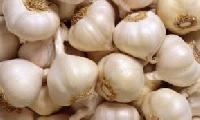
Fresh Vegetables
We are offering vegetables. In everyday usage, a vegetable is any part of a plant that is consumed by humans as food as part of a savoury course or meal. The term "vegetable" is somewhat arbitrary, and largely defined through culinary and cultural tradition. It normally excludes other main types of plant food, fruits, nuts and cereal grains but includes seeds such as pulses. The original meaning of the word vegetable, still used in biology, was to describe all types of plant, as in the terms "vegetable kingdom" and "vegetable matter". Originally, vegetables were collected from the wild by hunter-gatherers and entered cultivation in several parts of the world, probably during the period 10,000 bc to 7,000 bc, when a new agricultural way of life developed. At first plants which grew locally would have been cultivated, but as time went on, trade brought exotic crops from elsewhere to add to domestic types. Nowadays, most vegetables are grown all over the world as climate permits, and crops may be cultivated in protected environments in less suitable locations. China is the largest producer of vegetables, and global trade in agricultural products allows consumers to purchase vegetables grown in faraway countries. The scale of production varies from subsistence farmers supplying the needs of their family for food, to agribusinesses with vast acreages of single product crops. Depending on the type of vegetable concerned, harvesting the crop is followed by grading, storing, processing and marketing.
...more
Potato
We are offering potatoes are generally grown from seed potatoes – these are tubers specifically grown to be disease free and provide consistent and healthy plants. To be disease free, the areas where seed potatoes are grown are selected with care. In the usa this restricts production of seed potatoes to only 15 states out of the 50 states that grow potatoes.these locations are selected for their cold hard winters that kill pests and long sunshine hours in the summer for optimum growth. In the uk, most seed potatoes originate in scotland in areas where westerly winds prevent aphid attack and thus prevent spread of potato virus pathogens. Potato growth has been divided into five phases. During the first phase, sprouts emerge from the seed potatoes and root growth begins. During the second, photosynthesis begins as the plant develops leaves and branches. In the third phase stolons develop from lower leaf axils on the stem and grow downwards into the ground and on these stolons new tubers develop as swellings of the stolon. This phase is often (but not always) associated with flowering. Tuber formation halts when soil temperatures reach 27 °c (81 °f); hence potatoes are considered a cool-season crop. Tuber bulking occurs during the fourth phase, when the plant begins investing the majority of its resources in its newly formed tubers. At this stage, several factors are critical to yield: optimal soil moisture and temperature, soil nutrient availability and balance, and resistance to pest attacks. The final phase is maturation: the plant canopy dies back, the tuber skins harden, and their sugars convert to starches.
...more
Onion
We are offering onion. Cooking onions and sweet onions are better stored at room temperature, optimally in a single layer, in mesh bags in a dry, cool, dark, well-ventilated location. In this environment, cooking onions have a shelf life of three to four weeks and sweet onions one to two weeks. Cooking onions will absorb odours from apples and pears. Also, they draw moisture from vegetables with which they are stored which may cause them to decay. Sweet onions have a greater water and sugar content than cooking onions. This makes them sweeter- and milder-tasting but reduces their shelf life. Sweet onions can be stored refrigerated; they have a shelf life of approximately one month. Irrespective of type, any cut pieces of onion are best tightly wrapped, stored away from other produce, and used within two to three days.[43]cooking onions and sweet onions are better stored at room temperature, optimally in a single layer, in mesh bags in a dry, cool, dark, well-ventilated location. In this environment, cooking onions have a shelf life of three to four weeks and sweet onions one to two weeks. Cooking onions will absorb odours from apples and pears. Also, they draw moisture from vegetables with which they are stored which may cause them to decay. Sweet onions have a greater water and sugar content than cooking onions. This makes them sweeter- and milder-tasting but reduces their shelf life. Sweet onions can be stored refrigerated; they have a shelf life of approximately one month. Irrespective of type, any cut pieces of onion are best tightly wrapped, stored away from other produce, and used within two to three days.
...more
Garlic
5 Ton (MOQ)
We are offering garlic is easy to grow and can be grown year-round in mild climates. While sexual propagation of garlic is indeed possible, nearly all of the garlic in cultivation is propagated asexually, by planting individual cloves in the ground.[7] in cold climates, cloves are planted in the autumn, about six weeks before the soil freezes, and harvested in late spring. The cloves must be planted at sufficient depth to prevent freezethaw which causes mold or white rot[12] garlic plants are usually very hardy, and are not attacked by many pests or diseases. Garlic plants are said to repel rabbits and moles.[2] two of the major pathogens that attack garlic are nematodes and white rot disease, which remain in the soil indefinitely after the ground has become infected.[7] garlic also can suffer from pink root, a typically nonfatal disease that stunts the roots and turns them pink or red.
...moreBe first to Rate
Rate ThisOpening Hours